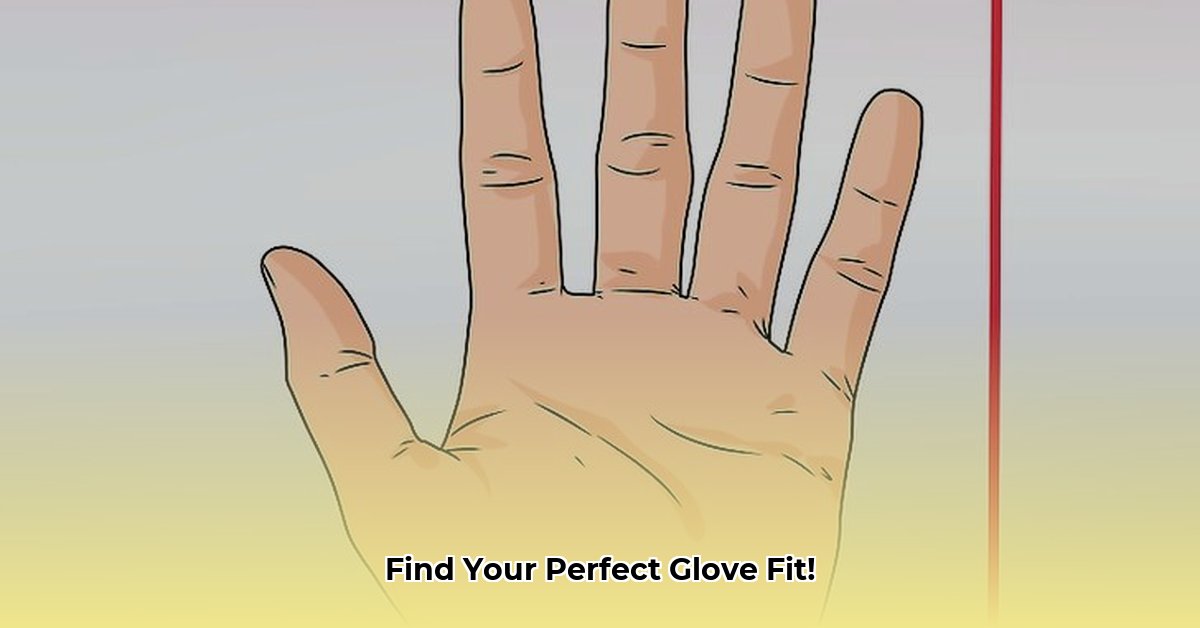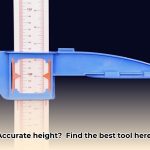Why Hand Size Matters
A proper glove fit is crucial for comfort, dexterity, and safety, whether you’re gardening, working out, or simply staying warm. Ill-fitting gloves can be cumbersome, restrict movement, or even pose safety hazards. This guide provides a comprehensive approach to measuring your hand circumference accurately, ensuring a perfect glove fit.
Gathering Your Supplies
Before you begin, gather the following:
- Flexible Measuring Tape: A tailor’s measuring tape is ideal for accuracy.
- String and Ruler: A piece of string and a standard ruler can be used as an alternative.
- Pen and Paper: To record your measurements.
Measuring Hand Circumference: A Step-by-Step Guide
-
Position Your Dominant Hand: Extend your dominant hand as if you’re about to shake someone’s hand. Relax your fingers, keeping them together but not stretched out.
-
Place the Tape: Position the end of the measuring tape across the widest part of your palm, just below your knuckles. Exclude your thumb from the measurement.
-
Wrap and Measure: Wrap the tape snugly around your hand, ensuring it’s not too tight. The tape should lie flat against your skin without constricting circulation. If using string, mark where the string overlaps and measure the marked section against a ruler.
-
Record the Measurement: Note the measurement where the tape overlaps the starting point. Record the number in both inches and centimeters.
Measuring Hand Length: An Additional Step
While hand circumference is the primary measurement for glove sizing, hand length is important for specialized gloves or those requiring a more precise fit. Measure from the tip of your middle finger to the base of your palm where it meets your wrist. Record this measurement in both inches and centimeters.
Glove Size Charts and Interpretation
Use the following chart as a general guideline. However, sizing can vary between brands and glove types. Always consult the manufacturer’s specific size chart. Many brands offer specific charts for different glove types, such as men’s, women’s, or work gloves. Some may present sizes in standard formats (XS-XXL), while others utilize numerical measurements. Match your hand measurements to the corresponding size on the chart.
| Hand Circumference (inches) | Hand Circumference (cm) | General Glove Size |
|---|---|---|
| 7 – 7.5 | 18 – 19 | Small |
| 7.5 – 8 | 19 – 20 | Medium |
| 8 – 8.5 | 20 – 21.5 | Large |
| 8.5 – 9 | 21.5 – 23 | X-Large |
| 9 – 9.5 | 23 – 24 | XX-Large |
Tips for an Accurate Fit
- Time of Day: Measure your hand at the end of the day when it’s likely slightly larger due to swelling.
- Between Sizes: If your measurement falls between two sizes, sizing up is usually recommended for comfort, especially for work gloves. For gloves requiring a precise fit (e.g., golf gloves), some experts suggest sizing down, but prioritize comfort.
- Material Matters: Consider the glove material. Leather gloves, for example, might stretch over time, so a slightly snugger initial fit may be preferable.
- Try Before You Buy: Whenever possible, try gloves on before purchasing, especially for specialized gloves. This allows for the best assessment of comfort, dexterity, and overall fit.
- Consider Hand Shape: If you have unusually long or short fingers, this might influence the fit, even if the circumference matches the chart.
- Glove Purpose: The intended use of the glove significantly impacts the desired fit. Work gloves often benefit from a slightly looser fit for better movement, while gloves requiring precision, like golf gloves, benefit from a snug fit.
- Dominant Hand: Your dominant hand is likely slightly larger. Measuring this hand helps ensure a comfortable fit for both hands.
Factors Beyond Measurement
Several factors can affect glove fit:
- Hand Shape: Consider the overall shape of your hand (long fingers, wide palm, etc.).
- Glove Material: Different materials have different stretch and flexibility.
- Glove Style: The design and construction of the glove (e.g., seams, lining) can influence fit.
- Manufacturer Variations: Sizing can differ between manufacturers, even for the same glove size.
Consider these additional tips for achieving optimal glove fit:
- Inspect the Seams: Check for smooth, well-constructed seams to avoid discomfort.
- Check the Closure: Ensure the glove closure system provides an appropriate and comfortable fit.
- Assess Dexterity: Evaluate your ability to move your fingers freely and comfortably.
- Consider the Activity: The intended use of the glove influences the desired fit.
The Future of Glove Fitting
Research into hand morphology and glove design is ongoing. Scientists are exploring new materials, sizing systems, and 3D printing technologies to improve glove fit, function, and personalization. While current methods are useful, future innovations may offer more precise and custom-tailored fits.
Finding the right glove size is essential for comfort, dexterity, and safety. By following these detailed instructions and using the provided charts, you can confidently select gloves that fit perfectly, enhancing your experience in any activity.
- Benefits of Work-Life Balance Enhance Health, Happiness, and Performance - December 22, 2025
- Occupational Wellness Activities Boost Employee Well-being And Productivity At - December 21, 2025
- Occupational Wellness Examples That Enhance Your Work Life - December 20, 2025
















